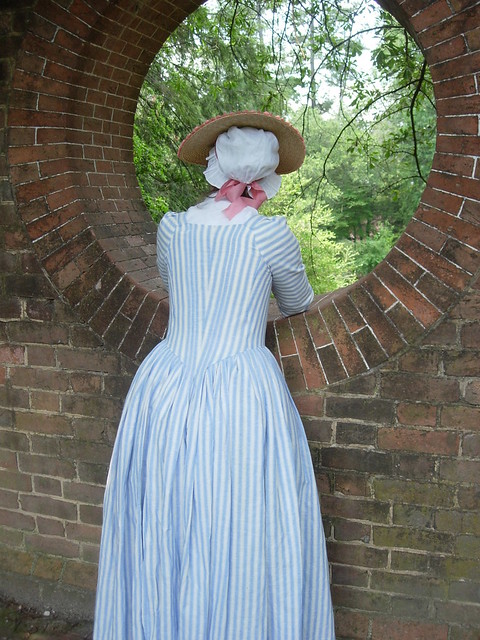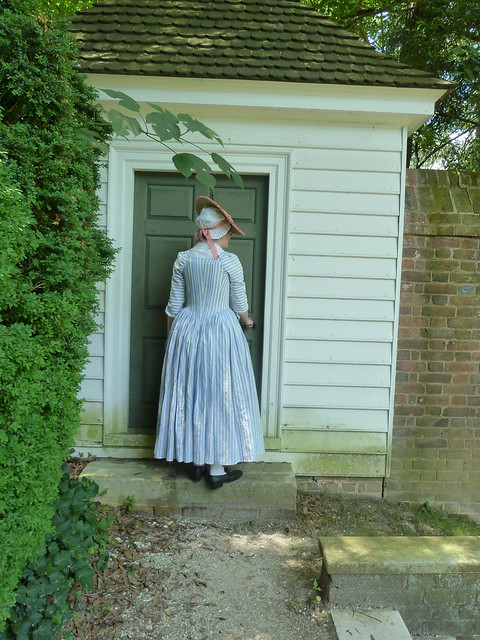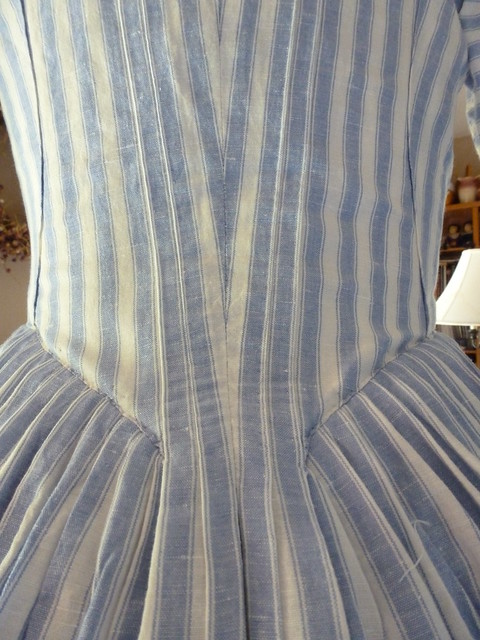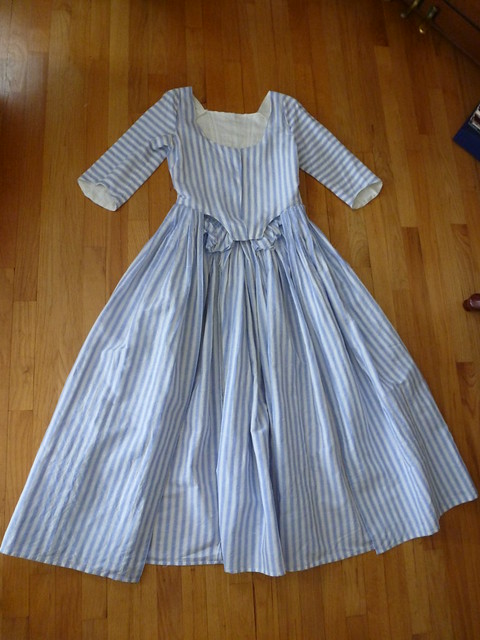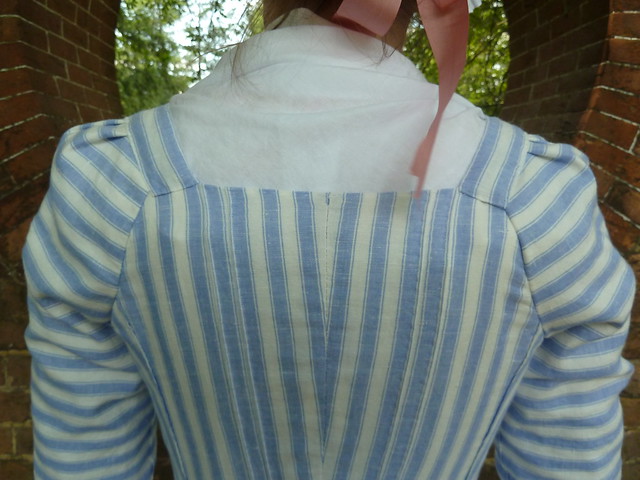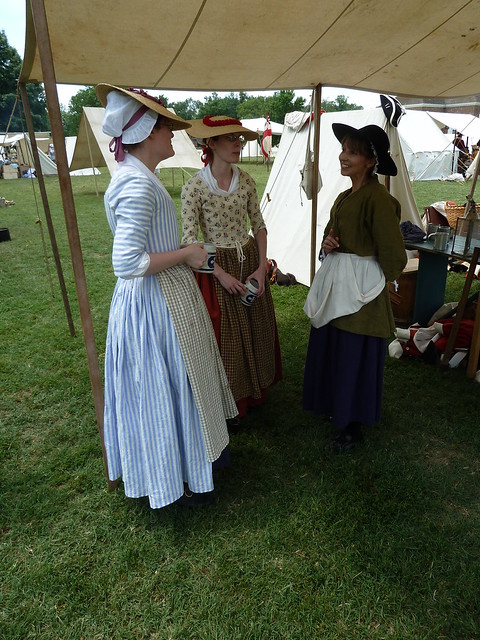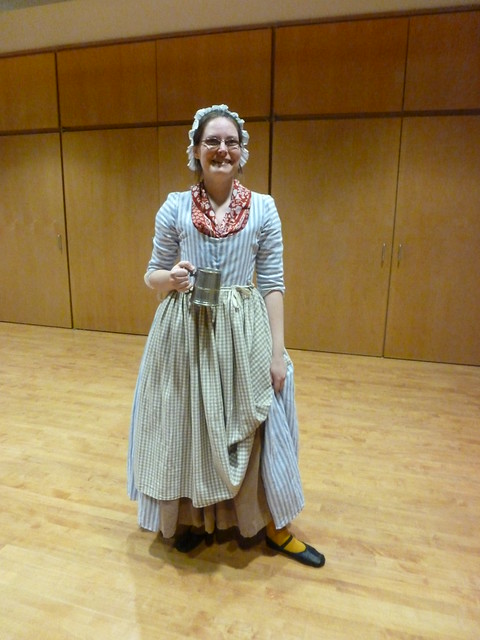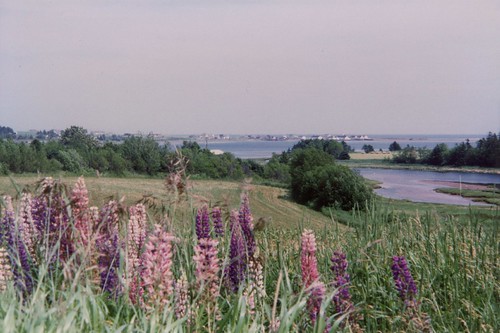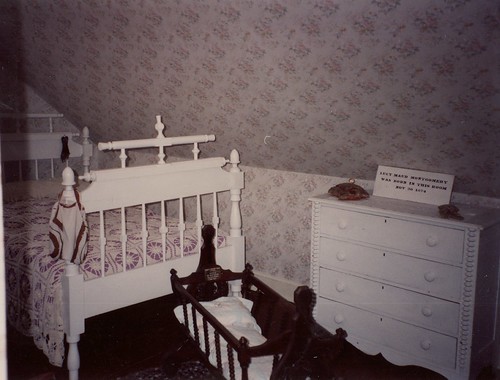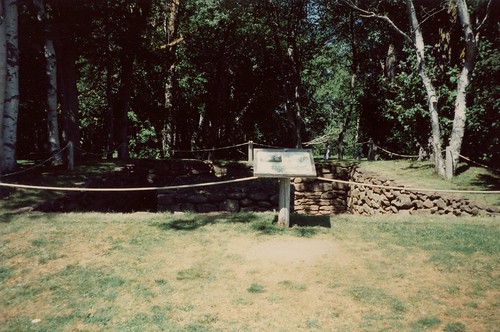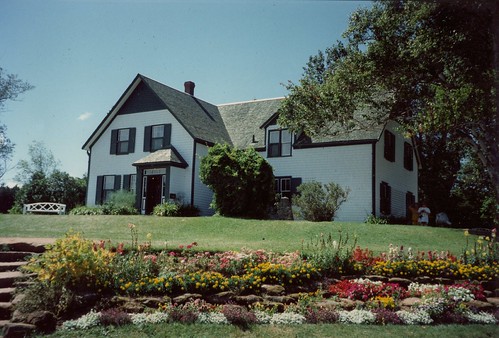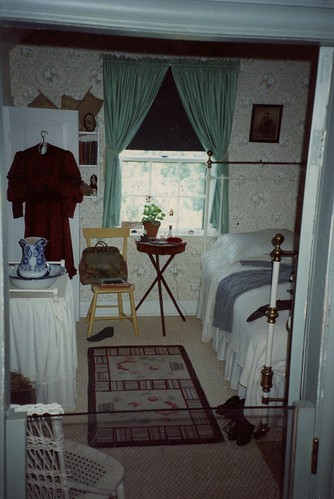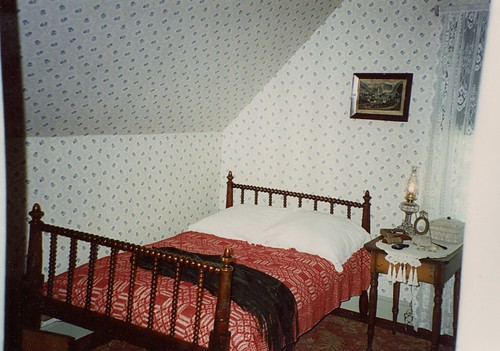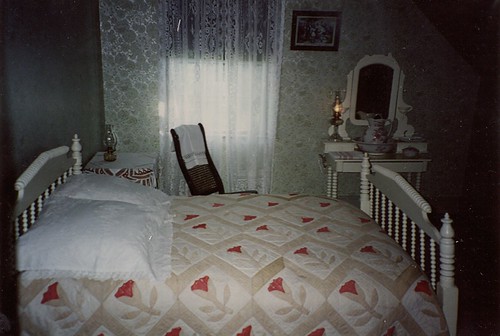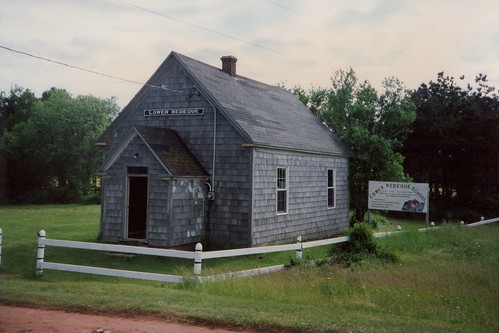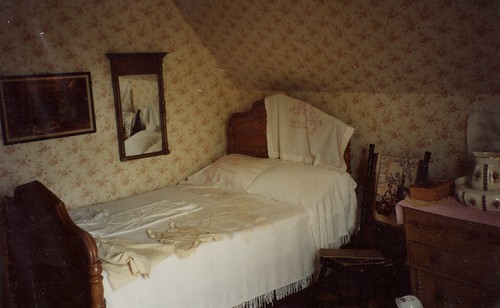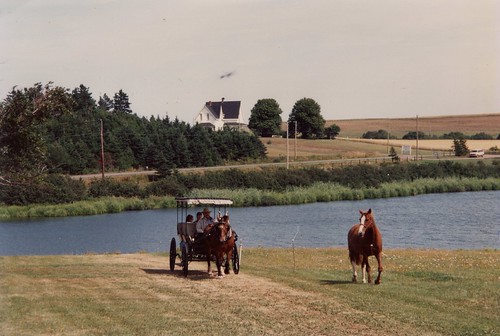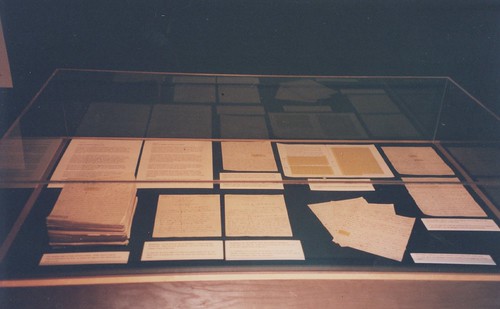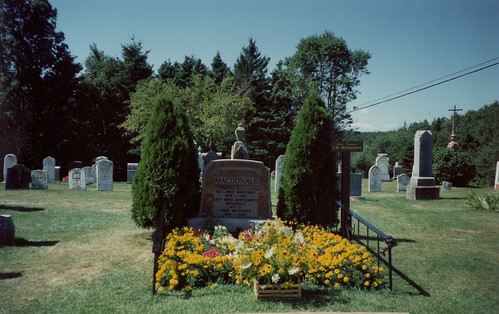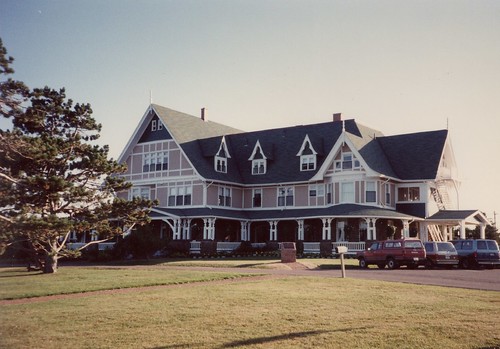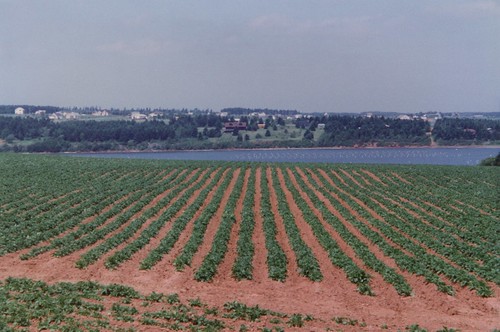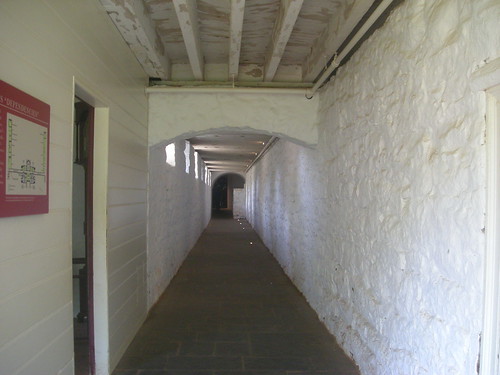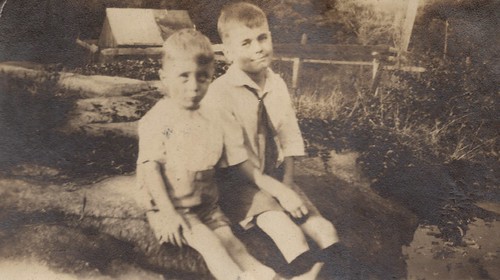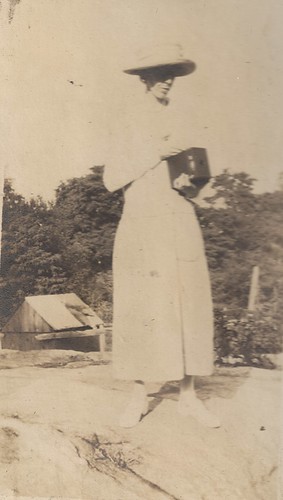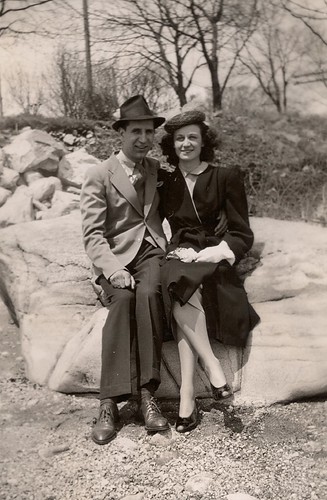Monday, April 30, 2012
Update! Jefferson Webinar
The recorded sessions from last Friday's Jefferson webinar, hosted by the Smithsonian and Monticello, are now available to view online! You can view the free recordings by visiting the companion website. Since I was stuck at work during the day, I was unable to view the webinar live and I am very excited that these sessions are now available to watch! Monticello posted a fun photo from one of the sessions on their facebook page today with a fun game of "add a caption!"
Sunday, April 29, 2012
Threaded Bliss
Blue and White Striped Linen English Gown, 1770-1780
Colonial Williamsburg, June 2011.
This post is about a year late. I began this gown about this time last year and finished it in June 2011 and wore it to several events last summer, including Under the Redcoat and at our shoemaking workshop. It wasn't until I dug it out of the closet on Friday to wear to our annual ECD Drancy Fess Ball that I realized I'd never given it the proper "Threaded Bliss" treatment. So here it is, better late than never!
Colonial Williamsburg, June 2011.
The pattern: Draped by me.
Construction details: The construction details of this gown are identical to those of my red floral print English gown and Ashley's lavender linen and "DAR" gowns, but since it's been so long since we're done a gown post here, I'll just give a brief overview with some detail pictures.
Because of the stripes in the fabric, I did the back panel first, creating a chevron pattern down the center back and forming the two back pleats alongside it. This back piece was then mounted to the linen lining and pleats secured using a spaced backstitch.
Detail of center back chevron.
Next, I draped the front of the bodice in the linen lining, as always using the neckline of my stays as my guide for the shape of the "scoop." Because of the stripes (and because I had plenty of fabric), I decided to cut the shoulder straps as part of the bodice fronts. After examining pictures of extant striped gowns, I decided on the angle I wanted for the chevron pattern at center front and then cut out the bodice front pieces in the striped linen.
These outer pieces were then fitted to the back panel, the edges folded under and then topstitched with more spaced backstitching. Chevron angles at the side/back seams were not common at all with striped fabrics and I honestly didn't cut the bodice pieces with any thought of creating them. When it came to pinning the fronts to the back, though, I found that they just so happened to fall like that because of the angle at which I had chosen to cut them to achieve the center-front chevron. What are the chances?!
The next step was to finish the inside by adding the interior lining and attaching it around the neckline and at the center fronts. The sleeves went in next, cut in the period-appropriate manner with stripes encircling the arms horizontally. Ashley pleated the sleeve caps with the dress on me and basted them to the lining of the shoulder strap. The shoulder piece of the striped linen was then overlaid and topstitched down to cover the raw edges of the sleeve.
The interior of the gown, with unfinished armscyes and the extra fabric
of the skirt folded down.
The back of the gown, with stripes converging everywhere!
Finally, the skirt panels were pleated to the bodice and secured to it using a backstitch. After wearing the gown a couple of times, however, I decided I didn't like the way the pleats were falling (this fabric has a nice crisp feel), so I took those stitches out and replaced them with whipstitches, which help the pleats hang and move more freely. While both techniques are documented methods for securing skirts to bodices, with this particular fabric, the latter is definitely preferable for the look I wanted to achieve.
The fabric: A delightful blue and white striped linen from Wm Booth. I bought it a couple of years ago and they sold out of it soon after, but it seems they've recently gotten it back in stock again. I wish there were more stripes like this out there these days to help spice up campfollowing wardrobes a bit more! My only caveat with this particular fabric is that, like most linen, it's a nightmare to iron, but the stripes just make it so much worse! My lovely pleats took hours (seriously, hours) to get back into place with the iron after I washed the gown. Of course, "back then" I'm sure they wouldn't have bothered as much as I did, but I have a horror of wrinkles, so I couldn't help myself. Otherwise, though, the fabric is lovely, with an ideal weight and a very nice crease.
Finishing the look: The nice thing about this shade of blue is that it basically goes with anything, which adds to the fun of mixing and matching petticoats to create different looks. During UTR (which seems to be the only event we actually have pictures for!), I paired the gown with a navy blue linen petticoat, a checked apron, and a very minimally decorated straw hat.
Under the Redcoat, Colonial Williamsburg, June 2011.
For a wander about town later that week, I swapped the simple hat for one a little more elaborately trimmed (though still within the means of a woman who would have worn this type of gown), abandoned the apron, and added a silver watch suspended from a silk ribbon.

Colonial Williamsburg, June 2011.
For our ECD Drancy Fess Ball this weekend, our theme was "Mythical Beasts." Ashley went as the Loch Ness Monster in what we foundly call her "Nessie Dressie" (so dubbed because of the serpentine trim, aka the blue/yellow changeable sacque), and I went as "Nottingham Ale" (a very "mythical" beast indeed, wouldn't you say?). ;-) To achieve this character, I paired the gown with a clay-colored linen petticoat and further aided the lower-class impression with a linen checked apron, yellow stockings, and a printed cotton kerchief (and, of course, the obligatory pewter mug!). Pray forgive the wrinkles in the photo - this was after a non-stop 2 1/2 hours of dancing and lifting of arms, so the bodice was badly in need of a repinning!
As "Nottingham Ale" for our ECD Drancy Fess Ball, April 2012.
Additional photos of this project can be found in its flickr photo set.
Friday, April 27, 2012
Jefferson Webinar Today!
Today the Smithsonian and Monticello are hosting a free live webinar focusing on my favorite Mr. J., offered in conjunction with the exhibits I mentioned in my recent TJ birthday post. Jefferson: Revolutionary Thinker will include a series of discussions which will touch on the subjects of religion, slavery, the westward expansion, and more. The lineup of presenters include Monticello president Leslie Greene Bowman, as well as directors and historians from the National Museum of African American History and Culture, and even Colonial Williamsburg TJ interpreter, Bill Barker. Visit this page to see the full program and bios for the presenters. The program begins at 9:50am EST with an introduction and runs until 3:50pm. Registration is free for anyone who would like to participate, and will remain open throughout the day. You can register online here. For anyone unable to view the presentations live today, the recorded material will be available online at a later date.
Monticello, April 2010
Friday, April 20, 2012
In the Footsteps of L.M. Montgomery on Prince Edward Island
For those of you who have been anxiously anticipating more sewing projects, please rest assured that a whole host of them are forthcoming in the next few weeks! We're very excited about them all and are looking forward to sharing them with you. But in the meantime...
As I mentioned in the previous post, we visited Prince Edward Island three times in the 1990s, primarily because our entire family (even our dad!) adores Anne of Green Gables and we were all interested in seeing the place that inspired it. Needless to say, after the first trip, we fell thoroughly in love with the Island and its people and it irresistibly drew us back a couple more times. Lately, we've been discussing our mutual desire to return at some point in the future, and we brought out the old photo albums to reminisce and wallow in our very fond memories. Here's a brief photo summary of some of the L.M. Montgomery historic sites we visited, interspersed with a couple of random Island views, to complement our previous post. Enjoy!
This is the small house in New London (once called Clifton) where Lucy Maud was born on 30 November 1874. The tiny upstairs bedroom interprets the event, with a cradle placed at the foot of the bed. Also featured in this house museum are some of Maud's many and fascinating scrapbooks and her wedding ensemble.
When Maud's mother died a couple of years after the birth of her child, Hugh John Montgomery sent his baby daughter to live with her maternal grandparents, the Macneills, in Cavendish, on the north shore of PEI. Their homestead - the house where Anne of Green Gables was written - sadly no longer stands, but the foundation has been preserved and is open to the public.
Down a winding, tree-canopied path, across the road, and through "The Haunted Woods" (yes, these are the woods that inspired the ones in the book!)...
...is Green Gables house, which was the home of Maud's grandfather's cousins, brother and sister David and Margaret Macneill.
Parks Canada acquired the property in 1937 and restored it to its turn-of-the-century appearance. Each room has been staged to interpret an aspect of Anne's Green Gables, from the dining room...
...to Anne's room (note the "puffed sleeves" dress and the carpet bag!)...
...to Marilla's practically plain bedroom, complete with amethyst broach on the dresser...
...to Matthew's room...
The house also contains some Montgomery artifacts, including the typewriter on which Maud prepared Anne of Green Gables for publication.
In 1897, Maud left the cozy Cavendish community that she loved and went to teach for a year in Lower Bedeque. The one-room schoolhouse in which she taught still stands and has been restored to its appearance during Maud's tenure there. The house where she boarded, which was just across the street, has unfortunately disappeared.
One of LMM's favorite places on the Island was the home of her Campbell cousins at Park Corner. The house has come to be known as "Silver Bush," after the novel it inspired.
Maud stayed here often in this upstairs bedroom...
...and was married in the house's parlor, in front of the fireplace, in 1911.
The house remains in the Campbell family (incredibly lovely people to chat with) and is full of family heirlooms, including the Crazy Quilt that Maud and her cousins made, which is a truly stunning piece of work.
The manuscript of Anne of Green Gables is owned by the Confederation Centre of the Arts in Charlottetown and is frequently on display. We were fortunate enough to catch it featured in two different LMM exhibits during our trips.
And of course, any pilgrimage in homage of LMM would not be complete without a visit to her final resting place in Cavendish, nearby the old Macneill property. Maud and her husband Ewan are buried together, right next to Maud's mother, Clara Macneill Montgomery, and her grandparents Alexander and Lucy Woolner Macneill.
Of course, there are many other gorgeous views to be seen around the Island, some Montgomery-related, like Dalvay by the Sea, which you might recognize as the "White Sands Hotel" of the TV Avonlea (and yes, it really is a hotel)...
...and some not-so-directly Montgomery related, but one can easily imagine them as views that the authoress herself could easily have seen and relished, like the picturesque West Point Lighthouse against the famous Island red sands (the lighthouse serves as a restaurant and inn, in addition to being a functional lighthouse, and was our absolute favorite place that we stayed)...
...and the typical, very lovely farms that define the landscape of this magical place.
Beautiful fields of lupines splash brilliant colors across the Island's landscapes.
As I mentioned in the previous post, we visited Prince Edward Island three times in the 1990s, primarily because our entire family (even our dad!) adores Anne of Green Gables and we were all interested in seeing the place that inspired it. Needless to say, after the first trip, we fell thoroughly in love with the Island and its people and it irresistibly drew us back a couple more times. Lately, we've been discussing our mutual desire to return at some point in the future, and we brought out the old photo albums to reminisce and wallow in our very fond memories. Here's a brief photo summary of some of the L.M. Montgomery historic sites we visited, interspersed with a couple of random Island views, to complement our previous post. Enjoy!
This is the small house in New London (once called Clifton) where Lucy Maud was born on 30 November 1874. The tiny upstairs bedroom interprets the event, with a cradle placed at the foot of the bed. Also featured in this house museum are some of Maud's many and fascinating scrapbooks and her wedding ensemble.
When Maud's mother died a couple of years after the birth of her child, Hugh John Montgomery sent his baby daughter to live with her maternal grandparents, the Macneills, in Cavendish, on the north shore of PEI. Their homestead - the house where Anne of Green Gables was written - sadly no longer stands, but the foundation has been preserved and is open to the public.
Down a winding, tree-canopied path, across the road, and through "The Haunted Woods" (yes, these are the woods that inspired the ones in the book!)...
...is Green Gables house, which was the home of Maud's grandfather's cousins, brother and sister David and Margaret Macneill.
Parks Canada acquired the property in 1937 and restored it to its turn-of-the-century appearance. Each room has been staged to interpret an aspect of Anne's Green Gables, from the dining room...
...to Anne's room (note the "puffed sleeves" dress and the carpet bag!)...
...to Marilla's practically plain bedroom, complete with amethyst broach on the dresser...
...to Matthew's room...
The house also contains some Montgomery artifacts, including the typewriter on which Maud prepared Anne of Green Gables for publication.
In 1897, Maud left the cozy Cavendish community that she loved and went to teach for a year in Lower Bedeque. The one-room schoolhouse in which she taught still stands and has been restored to its appearance during Maud's tenure there. The house where she boarded, which was just across the street, has unfortunately disappeared.
One of LMM's favorite places on the Island was the home of her Campbell cousins at Park Corner. The house has come to be known as "Silver Bush," after the novel it inspired.
Maud stayed here often in this upstairs bedroom...
...and was married in the house's parlor, in front of the fireplace, in 1911.
The house remains in the Campbell family (incredibly lovely people to chat with) and is full of family heirlooms, including the Crazy Quilt that Maud and her cousins made, which is a truly stunning piece of work.
The manuscript of Anne of Green Gables is owned by the Confederation Centre of the Arts in Charlottetown and is frequently on display. We were fortunate enough to catch it featured in two different LMM exhibits during our trips.
And of course, any pilgrimage in homage of LMM would not be complete without a visit to her final resting place in Cavendish, nearby the old Macneill property. Maud and her husband Ewan are buried together, right next to Maud's mother, Clara Macneill Montgomery, and her grandparents Alexander and Lucy Woolner Macneill.
Of course, there are many other gorgeous views to be seen around the Island, some Montgomery-related, like Dalvay by the Sea, which you might recognize as the "White Sands Hotel" of the TV Avonlea (and yes, it really is a hotel)...
...and some not-so-directly Montgomery related, but one can easily imagine them as views that the authoress herself could easily have seen and relished, like the picturesque West Point Lighthouse against the famous Island red sands (the lighthouse serves as a restaurant and inn, in addition to being a functional lighthouse, and was our absolute favorite place that we stayed)...
...and the typical, very lovely farms that define the landscape of this magical place.
Monday, April 16, 2012
Fun with Census Records: The Case of L.M. Montgomery
In a previous post, we used U.S. census records to trace the life of Laura Ingalls Wilder and her immediate family. Now, we'll turn to our north and to another one of our favorite childhood authors and take a look at Lucy Maud Montgomery (1874-1942) using the same type of resource, this time in Canada.
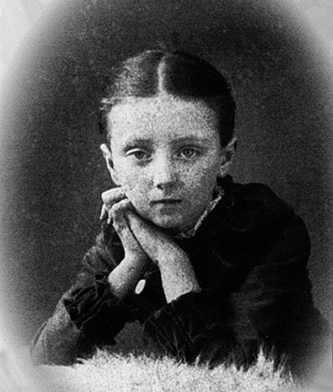
Lucy Maud Montgomery was born on the 30th of November 1874 in New London (then called Clifton), Prince Edward Island. The first Canadian census in which we can track her is thus 1881, where we find her at six years old living in nearby Cavendish. The trouble with this particular census is that it does not indicate the relationships of the individuals within a household, so without knowing a bit of additional information about LMM's life, things could get confusing at this point. Here we see her, listed as "Lucy M. Montgomery," living in a household with McNeills: Alexander, Lucy Ann, Chester B, and Mary E. LMM's mother died before young Lucy Maud was two, and her father shortly after relinquished his infant daughter to her maternal grandparents, the Macneills. Maud was thus raised by her grandparents, who we see here with two of their children, Maud's uncle and aunt.
Here is Hugh John Montgomery, Maud's father, still on Prince Edward Island in that same year, 1881. The widower returned briefly to his parents' home before departing for Saskatchewan. In 1890, after he had established himself and a new home out west, Maud's father sent for her to come and live with him and his new wife and family. Although she stayed with him for only a year, the 1891 census caught her with her father's family in Prince Albert, Saskatchewan, just before she left to return home to the Macneills on Prince Edward Island.
This census, unlike the previous one, indicates the relationships of each member of the household, and also the place of birth of each individual and each individual's father and mother. Here we see Hugh Montgomery at age 49; he was born on P.E.I., as were both of his parents. His new wife, 28-year-old Mary, was born in Ontario. Then comes 16-year-old Maud, who, as we know was born on P.E.I., as was her father. But what's interesting is that it indicates her mother was born Ontario. Clearly either the census taker assumed that Maud was Mary's daughter as well, or he was not told anything to the contrary for some particular reason or another. Beneath Maud are her two new half-siblings, Katie and Bruce, as well as a Scottish servant.
After the short stay with her father, Maud was glad to return to her roots on Prince Edward Island and she remained there until her marriage. The 1901 census shows her living alone with her grandmother; her grandfather had died in 1898. Things get more exciting, however, when you look at the household three below theirs. Brother and sister David and Margaret Mcneill, here living with their adopted nieces, were the owners of "Green Gables" house, just down a path and across the road from Maud and her grandmother. They were cousins of Maud's grandfather, and Maud spent a good deal of time visiting the pair when she was growing up. They would later become one of the inspirations for Matthew and Marilla Cuthbert.
On 5 July 1911, L.M. Montgomery married the Rev. Ewan Macdonald and the couple moved to Ontario. I have a feeling Maud got caught in between with this year's census. Here is her husband listed alone without his new bride in Ontario, which implies this was taken prior to July. I have been unable to trace the unmarried Maud on Prince Edward Island, however, so I'm assuming she was married and had left the Island prior to the P.E.I. enumeration later in the year.
Canada has not yet released the census records for any enumeration after 1911, so this is as far as we can go with Maud's life for the present. While these few censuses (censi?!) don't come close to representing the full, varied, and very exciting scope of Maud's early life (they don't show her at college or boarding away from Cavendish as a teacher, nor do they show her living with her Campbell cousins, as she did for some months following the death of her grandmother while she prepared for her wedding), they do offer an intriguing glimpse of the places and people that structured her life. We look forward to the release of additional records to see what else we can learn about the life of this influential and extraordinary writer.
In the mid-1990s, we visited Prince Edward Island several times to see the historic sites and places that were such an integral part of the life and works of LMM. We've been feeling awfully nostalgic about those trips and recently dug out the photo albums to reminisce and wish ourselves back there again. In an upcoming post, we'll share some of those photos (however old they may be now!) to give you a brief tour of one of our all-time favorite places to visit. Hopefully one day (soon!) we'll get back there. :-)

Lucy Maud Montgomery at age ten in 1882.
Photo linked from wikipedia.
Lucy Maud Montgomery was born on the 30th of November 1874 in New London (then called Clifton), Prince Edward Island. The first Canadian census in which we can track her is thus 1881, where we find her at six years old living in nearby Cavendish. The trouble with this particular census is that it does not indicate the relationships of the individuals within a household, so without knowing a bit of additional information about LMM's life, things could get confusing at this point. Here we see her, listed as "Lucy M. Montgomery," living in a household with McNeills: Alexander, Lucy Ann, Chester B, and Mary E. LMM's mother died before young Lucy Maud was two, and her father shortly after relinquished his infant daughter to her maternal grandparents, the Macneills. Maud was thus raised by her grandparents, who we see here with two of their children, Maud's uncle and aunt.
Here is Hugh John Montgomery, Maud's father, still on Prince Edward Island in that same year, 1881. The widower returned briefly to his parents' home before departing for Saskatchewan. In 1890, after he had established himself and a new home out west, Maud's father sent for her to come and live with him and his new wife and family. Although she stayed with him for only a year, the 1891 census caught her with her father's family in Prince Albert, Saskatchewan, just before she left to return home to the Macneills on Prince Edward Island.
This census, unlike the previous one, indicates the relationships of each member of the household, and also the place of birth of each individual and each individual's father and mother. Here we see Hugh Montgomery at age 49; he was born on P.E.I., as were both of his parents. His new wife, 28-year-old Mary, was born in Ontario. Then comes 16-year-old Maud, who, as we know was born on P.E.I., as was her father. But what's interesting is that it indicates her mother was born Ontario. Clearly either the census taker assumed that Maud was Mary's daughter as well, or he was not told anything to the contrary for some particular reason or another. Beneath Maud are her two new half-siblings, Katie and Bruce, as well as a Scottish servant.
After the short stay with her father, Maud was glad to return to her roots on Prince Edward Island and she remained there until her marriage. The 1901 census shows her living alone with her grandmother; her grandfather had died in 1898. Things get more exciting, however, when you look at the household three below theirs. Brother and sister David and Margaret Mcneill, here living with their adopted nieces, were the owners of "Green Gables" house, just down a path and across the road from Maud and her grandmother. They were cousins of Maud's grandfather, and Maud spent a good deal of time visiting the pair when she was growing up. They would later become one of the inspirations for Matthew and Marilla Cuthbert.
On 5 July 1911, L.M. Montgomery married the Rev. Ewan Macdonald and the couple moved to Ontario. I have a feeling Maud got caught in between with this year's census. Here is her husband listed alone without his new bride in Ontario, which implies this was taken prior to July. I have been unable to trace the unmarried Maud on Prince Edward Island, however, so I'm assuming she was married and had left the Island prior to the P.E.I. enumeration later in the year.
L.M. Montgomery in 1907, just prior to the publication of Anne of Green Gables.
Photo linked from extraordinarycanadians.
Canada has not yet released the census records for any enumeration after 1911, so this is as far as we can go with Maud's life for the present. While these few censuses (censi?!) don't come close to representing the full, varied, and very exciting scope of Maud's early life (they don't show her at college or boarding away from Cavendish as a teacher, nor do they show her living with her Campbell cousins, as she did for some months following the death of her grandmother while she prepared for her wedding), they do offer an intriguing glimpse of the places and people that structured her life. We look forward to the release of additional records to see what else we can learn about the life of this influential and extraordinary writer.
In the mid-1990s, we visited Prince Edward Island several times to see the historic sites and places that were such an integral part of the life and works of LMM. We've been feeling awfully nostalgic about those trips and recently dug out the photo albums to reminisce and wish ourselves back there again. In an upcoming post, we'll share some of those photos (however old they may be now!) to give you a brief tour of one of our all-time favorite places to visit. Hopefully one day (soon!) we'll get back there. :-)
Friday, April 13, 2012
Happy Birthday to Tom!
Just as we did last year, I'd like to offer a special post today in honor of Mr. Jefferson's birthday! As in the past, Monticello is holding a free ceremony today which is part of the annual Founder's Day at UVa. Poplar Forest will be serving cake to all who visit Jefferson's retreat today. William & Mary is hosting an innovative event tonight for its community which is also meant to mark the 250th anniversary of Mr. Jefferson completing his studies at W&M. You can read about the interactive AVAdventure here.
Portrait of Thomas Jefferson (1743-1826)
1805
Artist: Gilbert Stuart (1755-1828)
Origin: America, District of Columbia
Unframed: 29 5/16" x 24 1/2" (74.5 cm. x 62.2 cm.) and
1805
Artist: Gilbert Stuart (1755-1828)
Origin: America, District of Columbia
Unframed: 29 5/16" x 24 1/2" (74.5 cm. x 62.2 cm.) and
Framed: 36 9/16" x 31 11/16" x 2 3/4" deep
Oil on canvas
Acquisition funded by John D. Rockefeller, Jr.
Acc. No. 1945-22
Oil on canvas
Acquisition funded by John D. Rockefeller, Jr.
Acc. No. 1945-22
Last year I shared some fun facts and today I'd just like to share some recent Jefferson-related news and activities that might be of interest.
New exhibits at Monticello and the Smithsonian focus on the lives and work of the enslaved workers at Monticello. Mulberry Row has been brought back to life through new "mini-exhibitions" on site, as well as a new tour (which runs April through October), helping visitors to understand more fully the way of life at Monticello during Jefferson's life. The companion website, Landscape of Slavery: Mulberry Row at Monticello, provides a deeper look through profiles of several slaves, descriptions of the varied trades practiced, and maps of the evolution of this section of Jefferson's land.
Now at the Smithsonian's National Museum of American History in Washington D.C. is another exhibit which discusses the practice of slavery in the 18th century and particularly focuses on slavery at Jefferson's home. It explores the daily lives of his enslaved people, with emphasis on individuals and their families during their time at Monticello. Another excellent companion website provides articles and features that give us a glimpse into just a few of the lives that were effected by slavery. This exhibit runs until October 14, 2012.
The passageway under Monticello leads to the kitchens, storage,
and other dependencies.
and other dependencies.
April, 2010
Also currently on display the Smithsonian National Museum of American History is "Jefferson's Bible." Jefferson's compilation of different transcriptions of the Bible was meant as a personal exercise in order to better understand the life of Jesus, or as he titled it, "The Life and Morals of Jesus of Nazareth." You can view the book digitally as well as explore the conservation process on this website. The book will be on display until July 15, 2012.
Recently published by the Massachusetts Historical Society and the Thomas Jefferson Foundation, Thomas Jefferson's Granddaughter in Queen Victoria's England is the 1838-39 travel diary of Ellen Wayles Coolidge during a visit to England with her husband. Her observations on London society, museums, and the British monarchy not only provide us with insight of Victorian England, but her recollections of her youth and home life provide us with a glimpse into her family. The book is available for purchase through Monticello and amazon.com.
Colonial Williamsburg has reinstated the Jefferson Blog. Each week a Jefferson quote is posted on the blog and visitors are encouraged to respond discussing the relevance of his words to our world today. To celebrate the 250th anniversary of his W&M graduation, the quotes are focused around education.
Tuesday, April 10, 2012
Fun with Census Records: The Case of Laura Ingalls Wilder
In keeping with our recent theme of genealogy, and to complement last week's release of the 1940 US census records by the National Archives and Records Administration, we thought it might amuse our readers to share some of the "fun" non-familial things you can also do with census records. One of our favorite census-related pastimes is to try to locate some of the people of the past that we admire. Here's a look at what we uncovered about one of them: our favorite childhood author, Laura Ingalls Wilder (7 February 1867 - 10 February 1957). Laura is fairly easy to track through census records both because her name is relatively uncommon and because we already know a good deal about the relatives who might be listed with her at various points in her life, which makes narrowing the choices down to the Laura much quicker.
The first census Laura appears in is from 1870, when we find her living in the "little house on the prairie" near Montgomery City, Kansas. Here she appears with her parents, C.P. and Caroline, and her sisters Mary and Caroline. From this record, we see that her father was born in New York, and that she, Mary, and their mother were all born in Wisconsin. Younger sister Caroline, who was only two months old when the census was taken, was born in Kansas. The last name has been spelled "Ingles," but with the soundex option for searching indexed names on familysearch.org, it's still easy to find.
By 1880, the Ingalls family has moved to De Smet in Kingsbury Country, Dakota Territory. Youngest daughter Grace has been added to the family. But what is so interesting about this particular record is that, in listing the occupations of each member of the household, it indicates that both Mary and Laura "help in keeping house." While this would be only expected for teenage girls like them, the ordinary suddenly become more extraordinary when one realizes that Mary by this time was blind. As the National Archives indicates, "Enumerators in that census [i.e. 1880] were instructed not to make such a note unless a daughter contributed substantially to the welfare of the household," so clearly Mary was an active and productive young woman, despite her quite recent illness and blindness. It comes as no surprise, then, when Mary pops up listed as a student on the Iowa State Census for 1885 at the Iowa College for the Blind in Vinton, Iowa, which she attended from 1881-1889.
The 1890 census records were almost entirely destroyed by a fire in Washington D.C., so the next time we can trace Laura is in 1900, by which time she is living in Mansfield, Missouri, married to Almanzo Wilder, with a daughter Rose, who the census tells us was born in December 1886. What is particularly satisfying about the 1900 census is that they asked for several very useful bits of information for the first time, including the number of years a couple had been married (Laura and Almanzo, we can see, have been married for 14 years already), and the total number of children a woman has had, with the number now living. Laura reports two children, with only one currently living; those who have read her books will recall Laura's own emotional description of the birth and death of her second child in The First Four Years.
1910, 1920, 1930, and now 1940 (see page 5) (at ages 74 and 83 respectively!) find Laura and Almanzo still living in Mansfield (they would live the remainder of their lives there). In 1930, Rose Wilder Lane rejoins her parents on their farm. For this decade's census, new questions regarding occupation were added, and what is so great about this particular record is that it lists both Laura and her daughter as "authoresses" working in the industry of "novels." How neat is that? :-)
If you're interested in learning more about the full genealogy of Laura Ingalls Wilder, check out this page. The National Archives also has a great resource page for teachers that uses the example of LIW to integrate census records into lessons on American history, literature, and politics.
And just in case you're wondering what became of the rest of the Ingalls family after Laura's marriage, here they are in 1900, still living in De Smet, with 24-year-old Caroline a printer (she worked for the town newspaper) and 22-year-old Grace a teacher. Charles died soon after in 1902; in 1910, mother Caroline is listed as widowed, but still living with daughters Mary and Caroline. Grace married Nathan Dow in 1901; she appears in 1920 and in 1930 with him. Carrie married in 1912; here she is in 1920 with her husband, David Swanzey, and his two children from a previous marriage. I haven't been able to locate either mother Caroline Ingalls or Mary Ingalls (who never married) in 1920, so I'm not sure where they were living from that point until their deaths; Caroline died in 1923 and Mary in 1928.
**Just a note on the links I've provided with each census. Where available indexed online with free access, I've provided a link to the image for each record. When the online image is available only via a subscription service (we've been using Ancestry.com), I provided a link to the indexed record on familysearch.org, though it does not include free access to the document image itself. Whether available to be viewed online or not, the documents are all in the public domain, and print copies of the records are freely accessible at numerous sites around the country, if you're interested in taking a look at any of them yourself.**
The three oldest Ingalls girls: l-r are Carrie, Mary, and Laura in the 1870s.
Photo linked from NewWorldEncyclopedia.org.
The first census Laura appears in is from 1870, when we find her living in the "little house on the prairie" near Montgomery City, Kansas. Here she appears with her parents, C.P. and Caroline, and her sisters Mary and Caroline. From this record, we see that her father was born in New York, and that she, Mary, and their mother were all born in Wisconsin. Younger sister Caroline, who was only two months old when the census was taken, was born in Kansas. The last name has been spelled "Ingles," but with the soundex option for searching indexed names on familysearch.org, it's still easy to find.
By 1880, the Ingalls family has moved to De Smet in Kingsbury Country, Dakota Territory. Youngest daughter Grace has been added to the family. But what is so interesting about this particular record is that, in listing the occupations of each member of the household, it indicates that both Mary and Laura "help in keeping house." While this would be only expected for teenage girls like them, the ordinary suddenly become more extraordinary when one realizes that Mary by this time was blind. As the National Archives indicates, "Enumerators in that census [i.e. 1880] were instructed not to make such a note unless a daughter contributed substantially to the welfare of the household," so clearly Mary was an active and productive young woman, despite her quite recent illness and blindness. It comes as no surprise, then, when Mary pops up listed as a student on the Iowa State Census for 1885 at the Iowa College for the Blind in Vinton, Iowa, which she attended from 1881-1889.
The 1890 census records were almost entirely destroyed by a fire in Washington D.C., so the next time we can trace Laura is in 1900, by which time she is living in Mansfield, Missouri, married to Almanzo Wilder, with a daughter Rose, who the census tells us was born in December 1886. What is particularly satisfying about the 1900 census is that they asked for several very useful bits of information for the first time, including the number of years a couple had been married (Laura and Almanzo, we can see, have been married for 14 years already), and the total number of children a woman has had, with the number now living. Laura reports two children, with only one currently living; those who have read her books will recall Laura's own emotional description of the birth and death of her second child in The First Four Years.
1910, 1920, 1930, and now 1940 (see page 5) (at ages 74 and 83 respectively!) find Laura and Almanzo still living in Mansfield (they would live the remainder of their lives there). In 1930, Rose Wilder Lane rejoins her parents on their farm. For this decade's census, new questions regarding occupation were added, and what is so great about this particular record is that it lists both Laura and her daughter as "authoresses" working in the industry of "novels." How neat is that? :-)
If you're interested in learning more about the full genealogy of Laura Ingalls Wilder, check out this page. The National Archives also has a great resource page for teachers that uses the example of LIW to integrate census records into lessons on American history, literature, and politics.
The Ingalls family in 1894.
And just in case you're wondering what became of the rest of the Ingalls family after Laura's marriage, here they are in 1900, still living in De Smet, with 24-year-old Caroline a printer (she worked for the town newspaper) and 22-year-old Grace a teacher. Charles died soon after in 1902; in 1910, mother Caroline is listed as widowed, but still living with daughters Mary and Caroline. Grace married Nathan Dow in 1901; she appears in 1920 and in 1930 with him. Carrie married in 1912; here she is in 1920 with her husband, David Swanzey, and his two children from a previous marriage. I haven't been able to locate either mother Caroline Ingalls or Mary Ingalls (who never married) in 1920, so I'm not sure where they were living from that point until their deaths; Caroline died in 1923 and Mary in 1928.
**Just a note on the links I've provided with each census. Where available indexed online with free access, I've provided a link to the image for each record. When the online image is available only via a subscription service (we've been using Ancestry.com), I provided a link to the indexed record on familysearch.org, though it does not include free access to the document image itself. Whether available to be viewed online or not, the documents are all in the public domain, and print copies of the records are freely accessible at numerous sites around the country, if you're interested in taking a look at any of them yourself.**
Wednesday, April 4, 2012
Finding Family Faces
One of the most exciting - and most frustrating - parts of beginning a genealogical journey is delving into boxes full of old family photos. Sometimes you get incredibly lucky and discover that some wonderful ancestor with incredible foresight thought to label some of them with names and/or years and/or places. This has proven a rarity in our family, but when it does happen, it makes us prodigiously happy. :-)
When we were in middle school, we discovered three old photo albums stashed away in a drawer at our grandfather's house. He gave them to us and we took them home and looked through them, but at that time never asked him to tell us more about who was in them. Oh, how we wish we had! About a month ago, we dug them out of our parents' basement and looked through them again for the first time since we got them. We were thrilled to see that two of the three were labeled, and though it took some work deciphering the handwriting, we were able to figure out what some of the names and labels said. Unfortunately, much of the time that we could read the names, we had no clue who the person was or how or even if they were actually related to us.
As our research into our family history has progressed, we've gradually begun to match personal histories with all those individual names in the albums, and identify their relationships to the other people in the pictures, and to ourselves. It's so exciting when a name we're seen only on the back of an old photo suddenly pops up on another branch of our family tree. That was the case with these two little boys, Francis and Jack.
One of the albums we have is from our great-aunt M and though it only contains about a dozen pictures, it has proven one of the most useful family-deciphering tools we've yet come across. Fortunately for us. she labeled almost all of the pictures with a date, names, and even in some cases the place where each photo was taken. From this, we were able to learn that the photo album was put together when she was about 16 or 17, in 1923. Francis and Jack are part of this album, but all we had to go on for identification purposes were their names and the date. We didn't know if they were family friends, neighbors, or relatives. As we've learned more about our great-aunt's mother (our great-grandmother) and her family, we discovered that Francis and Jack were M's cousins, the two sons of M's Aunt C (our great-grandmother's sister). Much to our delight, this solved another mystery from this same album. A couple pages after Francis and Jack is this photo, labeled simply "Aunt C" (to clarify, the photo includes her full first name, but we're omitting it here for privacy).
When we first saw it, we have no idea who "Aunt C" could be or which branch of the family she came from. Now, not only do we know who Francis and Jack are, but we also know what their mother looked like. It's the little victories like these that make genealogy so addicting a treasure hunt!
Great-aunt M also labeled herself in group photos, often along with the first initial and last names of the friends that appear with her. In several photos like this one, we can see what M looked like around age 16, and we also know who she was close to. Using the traces of information M left behind for us, we've been able to find a couple of her friends with their families on census records and thus have learned a little about the non-familial relationships that also helped shape our family's past.
When we were in middle school, we discovered three old photo albums stashed away in a drawer at our grandfather's house. He gave them to us and we took them home and looked through them, but at that time never asked him to tell us more about who was in them. Oh, how we wish we had! About a month ago, we dug them out of our parents' basement and looked through them again for the first time since we got them. We were thrilled to see that two of the three were labeled, and though it took some work deciphering the handwriting, we were able to figure out what some of the names and labels said. Unfortunately, much of the time that we could read the names, we had no clue who the person was or how or even if they were actually related to us.
As our research into our family history has progressed, we've gradually begun to match personal histories with all those individual names in the albums, and identify their relationships to the other people in the pictures, and to ourselves. It's so exciting when a name we're seen only on the back of an old photo suddenly pops up on another branch of our family tree. That was the case with these two little boys, Francis and Jack.
Francis and Jack, 1923.
One of the albums we have is from our great-aunt M and though it only contains about a dozen pictures, it has proven one of the most useful family-deciphering tools we've yet come across. Fortunately for us. she labeled almost all of the pictures with a date, names, and even in some cases the place where each photo was taken. From this, we were able to learn that the photo album was put together when she was about 16 or 17, in 1923. Francis and Jack are part of this album, but all we had to go on for identification purposes were their names and the date. We didn't know if they were family friends, neighbors, or relatives. As we've learned more about our great-aunt's mother (our great-grandmother) and her family, we discovered that Francis and Jack were M's cousins, the two sons of M's Aunt C (our great-grandmother's sister). Much to our delight, this solved another mystery from this same album. A couple pages after Francis and Jack is this photo, labeled simply "Aunt C" (to clarify, the photo includes her full first name, but we're omitting it here for privacy).
"Aunt C" in 1923.
When we first saw it, we have no idea who "Aunt C" could be or which branch of the family she came from. Now, not only do we know who Francis and Jack are, but we also know what their mother looked like. It's the little victories like these that make genealogy so addicting a treasure hunt!
Great-aunt M also labeled herself in group photos, often along with the first initial and last names of the friends that appear with her. In several photos like this one, we can see what M looked like around age 16, and we also know who she was close to. Using the traces of information M left behind for us, we've been able to find a couple of her friends with their families on census records and thus have learned a little about the non-familial relationships that also helped shape our family's past.
Great-aunt M (far right) with her friends in 1923.
Now if only every ancestor had the diligence and foresight to label like Great-aunt M...
Monday, April 2, 2012
1940 U.S. Census Released Today!
Being new to the world of genealogy, today's release of the 1940 U.S. Federal Census by the National Archives is an exciting event for us! Census records have been extremely helpful for us, not only by providing us with the location of many of our ancestors, but also revealing their birth years, where their parents came from, and where they worked. Many times, they have also introduced us to new members to add to our family tree.
United States census records remain private, held at the National Archives, to be released to the public only after 72 years. There were some new questions added on the 1940 census that had not been asked previously. For example, for the first time, the enumerator marked who was providing the information for each individual household. You can view a complete list of the questions and blank census forms here. This has me thinking back to the 2010 census we just filled out. Do you remember what questions they asked? I wonder if the information I provided will be useful to my ancestors 70 years from now?
Free access to digital images of the census will be available today, April 2, at 9:00am EST on 1940census.archives.gov. Beginning at 8:30am, on the same website, will be a live webcast of an opening ceremony. Information from the census is not yet indexed, but if you know where your ancestors were living, you can use the enumeration district to locate them. Ancestry.com has access to the images as of midnight and will immediately begin uploading the images to their website. Several organizations have plans for immediate indexing of the census to make searching for family names possible. FamilySearch, along with some other organizations, are sponsoring this website and blog, which are rallying people to help index the census as quickly as possible once it is released, so that it can be made available to as wide an audience as possible. Another fun site was the facebook page of the National Archives where fun photos and facts have been posted. I've enjoyed counting down the days with these organizations and look forward to witnessing all of the events throughout the day today.
For those of you who have been anxiously anticipating the 1940 census release to locate some of your ancestors, we wish you the best of luck in your research! Happy 1940's Day!
One set of our grandparents in the mid-1940s.
United States census records remain private, held at the National Archives, to be released to the public only after 72 years. There were some new questions added on the 1940 census that had not been asked previously. For example, for the first time, the enumerator marked who was providing the information for each individual household. You can view a complete list of the questions and blank census forms here. This has me thinking back to the 2010 census we just filled out. Do you remember what questions they asked? I wonder if the information I provided will be useful to my ancestors 70 years from now?
Our grandmother's eldest brother F in uniform in 1944.
Do you know many members of your 1940s family served in the
war that defined this decade?
Free access to digital images of the census will be available today, April 2, at 9:00am EST on 1940census.archives.gov. Beginning at 8:30am, on the same website, will be a live webcast of an opening ceremony. Information from the census is not yet indexed, but if you know where your ancestors were living, you can use the enumeration district to locate them. Ancestry.com has access to the images as of midnight and will immediately begin uploading the images to their website. Several organizations have plans for immediate indexing of the census to make searching for family names possible. FamilySearch, along with some other organizations, are sponsoring this website and blog, which are rallying people to help index the census as quickly as possible once it is released, so that it can be made available to as wide an audience as possible. Another fun site was the facebook page of the National Archives where fun photos and facts have been posted. I've enjoyed counting down the days with these organizations and look forward to witnessing all of the events throughout the day today.
For those of you who have been anxiously anticipating the 1940 census release to locate some of your ancestors, we wish you the best of luck in your research! Happy 1940's Day!
Subscribe to:
Posts (Atom)

